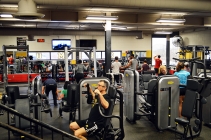Most undergraduate students in America today have to take some general education classes in addition to the courses required for their major.
As a liberal arts university, UMBC boasts an even more demanding General Education Program. While the sentiment is admirable, some of the requirements are excessive and the lack of course options to fulfill them defeats their purpose.
General education standards were spearheaded by a group of educators who bemoaned movements toward majors and specialization, wishing instead to expose students to a wide array of art and thought.
UMBC students, accordingly, are required to take three courses in the arts and humanities, two in the sciences (one with a lab), three in the social sciences and many more. In all, a student must take eleven GEP courses at minimum, along with two that fulfill physical education requirements.
The school’s courses are largely successful at encouraging students to develop skills beyond their majors. “It’s going to different cultures, going to media — it’s making yourself more rounded,” said Kevin McIntyre, a sophomore mathematics major. “Having a math major take an English class — it kind of frees their mind, [keeps it] open for interpretation.”
The requirements can be especially helpful for students still determining what to pursue on campus. Philip Do, a freshman majoring in biology, decided last semester to minor in writing after loving his creative essay writing class, which fulfilled a fine arts requirement. “It’s good to get, I guess, a broader perspective of the world,” said Do.
However, the General Education Program has its problems. “It can be a bit restrictive at times,” Do added. “It can kind of weigh down your progress toward graduation. For example, I’m going to have to take physical education classes eventually, which I’m not looking forward to.”
Do is not alone in his annoyance. Few look forward to meeting the university’s physical education requirement hurdles with little justification. Preventing college students from becoming couch potatoes may be a worthy cause, but an obligatory class is not the solution.
The requirement falls especially flat when students sidestep it with classes whose “physical education” designation is doubtful. Bowling may be fun, but does the class teach students a semester worth of learning?
Students employ similar workarounds for other requirements as well.
“Science of Water…” says Emma Jett, a freshman studying English and secondary education. “I mean, it’s an easy course, but I feel as if I could be challenged a little more than that.”
Jett is one of many students intimidated by the caliber of many courses that fulfill the requirement for a science course with a lab component. Instead, many take Water: An Interdisciplinary Study. The course’s difficulty? “Easier than my high school science classes,” she laughs.
If the school hopes to stimulate students intellectually with courses beyond their majors, there have to be wider selections, especially when it comes to the requirement for a lab-based science class. Students not pursuing the sciences need options that are accessible without being laughable, easy A courses.
UMBC’s GEPs help to broaden the learning experience students receive. However, with the removal of physical education standards and the introduction of greater course options for some requirements, the standards could better accomplish their purpose.
As a matter of principle, the university should aim to have students wondering at courses like a stargazing astronomy lab, not trudging through a repeat of middle school gym class.

